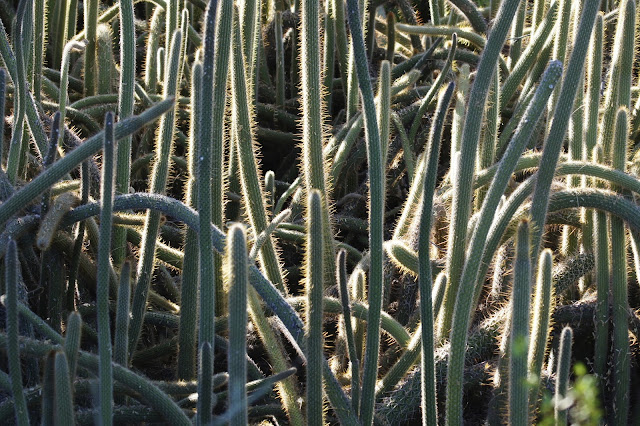The books themselves are pieces of history, and demand a certain reverence and delicacy that is, at times, hard to maintain while adventuring along the Missouri River with J.J. Audubon. The binding of these books is so old that you have to cut the pages apart with a sharp knife as you progress through the stories (every two pages are actually attached on the right margin, so page 13 skips right to page 16 unless you lacerate the right-side margin to reveal pages 14 and 15).
I didn't know they ever bound books this way, but I guess it makes sense. It reminds me of a newspaper, as if they'd print the entire book out on one long sheet of paper, or several long sheets, and then fold them back in on themselves intermittently for a strong, non-adhesive binding. Fascinating!
My aspiration is to read a section each week and reproduce its highlights here every Wednesday, to the best of my ability, such that I can share these incredibly cool stories with all who are interested.
John J. Audubon's life began rather inauspiciously, on an unknown day, in an unknown year, on the French island of Santo Domingo (modern Dominican Republic). Audubon's mother was killed in a slave insurrection soon after his birth, and his father resettled in Nantes, France, where he remarried. With little knowledge of his early childhood, and none about his birth, Audubon's journals actually begin with a description of his father's: "John Audubon, my grandfather, was born and lived at the small village of Sable d'Olhonne, and was by trade a very humble fisherman. He appears to have made up for that want of wealth by the number of his children, twenty-one of whom he raised to man and womanhood...When my father had reached the age of twelve years, his father presented him with a coarse shirt, a stick, his blessing, and urged him to go and seek means for his future support...Some kind whaler or cod-fisherman took him on board as a "Boy"."
Audubon's father slowly grew in strength and skill. He achieved his own command of a fishing vessel at twenty-one, and owned several small crafts by twenty-eight, with which he sailed to the Caribbean, where he plied his trade until he could buy a small estate. Within ten years, John Woodhouse Audubon was called to serve in the French navy, and he worked for both Rochambeau and Lafayette during the American Revolution, "The war between England and her child of the West."
By his own account, Audubon took after his father, both in appearance and disposition: "My father and I were of the same height and stature, say about five feet ten inches, erect, and with muscles of steel; his manners were those of a most polished gentleman, for those and his natural understanding had been carefully improved both by observation and self-education. In temper we much resembled each other also, being warm, irascible, and at times violent; but it was like the blast of a hurricane, dreadful for a time, then calm almost instantly returned."
Despite the rather ruff-looking portrait that Audubon provides of his farther, he grew up in exceptional comfort. In fact his first vivid memory from France was of their pet monkey deliberately killing their pet parrot as it squawked for its morning meal: "I was tranquilized, the monkey was forever afterward chained, and Mignonne buried with all the pomp of a cherished lost one."
While Aududon's father insisted that he learn the value of hard work and perseverance from a young age, it was perhaps Audubon's stepmother who won out in the early years: "My stepmother, who was devotedly attached to me (she had no children of her own), far too much for my own good, was desirous that I should be brought up to live and die like a gentleman. She therefore completely spoiled me, hid my faults, boasted to every one of my youthful merits, and worse than all, said frequently in my presence that I was the handsomest boy in France."
It was assumed that Audubon would follow in his fathers footsteps and serve either as an officer in the French military or as an engineer. In addition to his normal schooling, he was afforded private tutors in mathematics, geometry, drawing, geography, and fencing. "My father being mostly absent on duty, my mother suffered me to do as I pleased; it was therefore not to be wondered at that, instead of applying closely to me studies, I preferred associating with boys of my age and disposition, who were more fond of going in search of birds' nests, fishing, or shooting...Thus almost every day, instead of going to school when I ought to have gone, I usually made for the fields, where I spent the the day; my little basket went with me, filled with good eatables, and when I returned home, during either winter or summer, it was replenished with what I called curiosities, such as birds' nests, birds' eggs, curious lichens, flowers of all sorts, and pebbles gathered along the shore of some rivulet."
Thus we can see that curiosity and love for nature beginning to grow in young Audubon, perhaps at the expense of other subjects. "The first time my father returned from sea, my room exhibited quite a show, and on entering it he was so pleased to see my various collections that he complimented me on my taste for such things. When he inquired what else I had done, and I, like a culprit, hung my head, he left me without saying another word."
That's all for this week. Tune in next Wednesday for the beginning of John J. Audubon's adventures.
In the mean time, super bonus points to whoever can identify this bird engraved on the cover:





























































